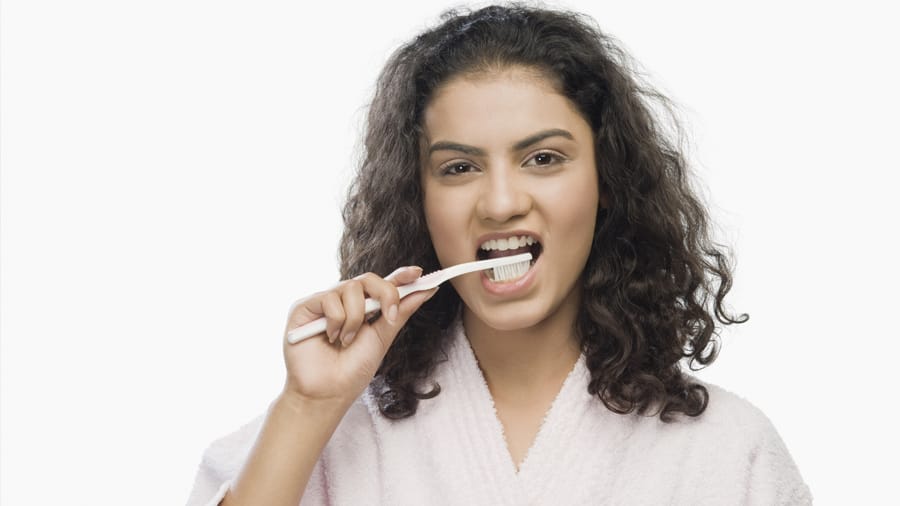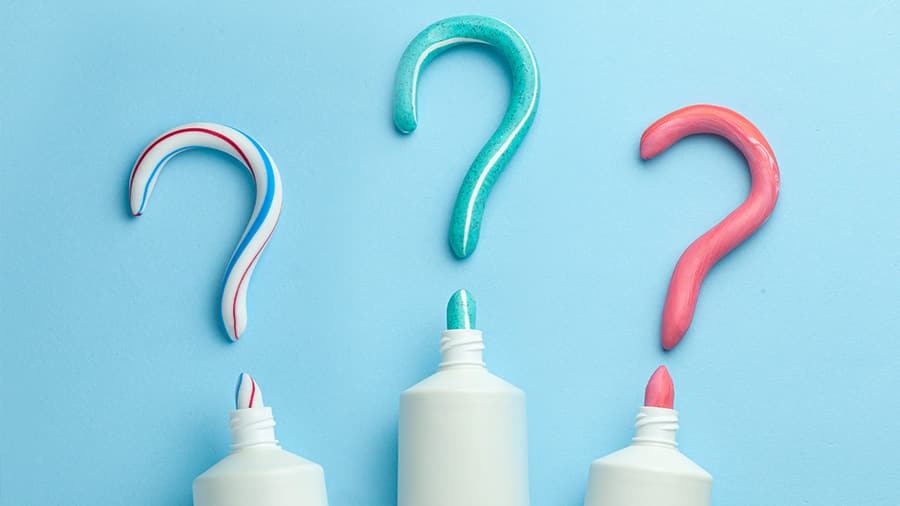Different Types of Teeth Whitening Products
There are several over-the-counter, effective, and affordable products that help get whiter teeth. Ranging from whitening toothpaste to teeth whitening strips and trays, these products can remove stains and gently whiten teeth. The whitening process and whitening ingredients may differ from product to product. The following are the various teeth whitening products designed to whiten teeth for a brighter smile.
Teeth Whitening Toothpaste
There are 2 key types of teeth whitening toothpastes available today. The first type usually has mild abrasive agents that gently scrub the tooth surface, removing surface-level stains. For instance, the Visible White Whitening Toothpaste starts whitening your teeth in 1 week. It contains whitening accelerators that help in removing stains (like tea, coffee, wine stains) by gently removing stains and polishing the surface of your teeth while keeping the enamel safe.
Teeth Whitening Pen
Whitening pens are emerging as a convenient and portable option for teeth whitening. These pens often feature a range of whitening agents like hydrogen peroxide or carbamide peroxide. These pens contain a gel that is applied directly to the teeth after brushing. The gel is to be left on your teeth for a specified period of time, allowing the whitening agents to act on stains and whiten your teeth gradually.
While many teeth whitening pens are available in the Indian market, not all of them are proven to be effective. They also may contain more potent whitening agents versus a toothpaste and should be applied with care to avoid any side effects. It is better to consult with a dentist to get a recommendation for a whitening pen that is genuinely effective. One such option available with dentists is the Colgate Visible White Teeth Whitening Pen. It is an effective whitening gel with hydrogen peroxide - known to remove stains and whiten teeth with regular use. These pens are good for maintaining the in-clinic whitening you get from a dentist.
Tray-based Teeth Whiteners
Whitening trays can assist the whitening process of a teeth whitening pen. These can be of two types - a simple application tray or an LED tray. With the application tray, you can apply the whitening serum to the tray and then place the tray in your mouth. This process helps the serum stay in place for the required amount of time. The second type of tray is an LED tray. These typically have blue-light technology that accelerates the whitening process of the whitening serum. Both these trays can be custom-made by your dentist - designed to fit the unique shape of your mouth.
Teeth Whitening Strips
These are thin strips with a serum pre-applied on the strip. The active ingredient gently bleaches the teeth. They offer a seamless at-home whitening experience, eliminating the need for cumbersome trays.
Teeth Whitening Foam
Teeth whitening form is similar to toothpastes, the only difference is that when dispensed from its dispenser, foam comes out as a fluffy foam (vs. a toothpaste eventually foams in the mouth). In terms of mode of action, these work similar to toothpaste.
Professional Teeth Whitening
You can opt for professional in-office bleaching to remove deep stains from your teeth. In-office teeth bleaching is a premium dental procedure performed under the direct supervision of a dentist, designed to significantly lighten the colour of your teeth in a concise period.
In a fast-paced world, one may prefer over-the-counter or at-home teeth whitening products over in-office teeth whitening treatments. You may choose to consult a dental professional to pick a teeth whitening product that works best for you.
Frequently Asked Questions
How do teeth whitening products work?
Teeth whitening products typically contain active whitening ingredients or bleaching agents. They can work either by removing surface stains or going within the enamel to lighten deeper, intrinsic stains.
Are teeth whitening products safe to use at home?
Most over-the-counter teeth whitening products are considered safe by most people when used as directed. It may be advisable to consult a dental professional before picking any product for your teeth whitening regimen. A dentist can help with the right usage instructions and can help you avoid potential side effects like gum irritation or tooth sensitivity.
How long does it take to see results with teeth whitening products?
The results of tooth whitening products can vary depending on the product and the severity of the stains on your teeth. Some products may show noticeable results in a few days of use, while others may take several weeks of regular use.
How often should I use teeth whitening products?
The frequency of use depends on the product type and the desired results. Excessive use of whitening products or using them without dental guidelines may raise the risks of enamel damage and increased sensitivity. So it is best to follow the usage guidelines as recommended by a dentist.
This article is intended to promote understanding of and knowledge about general oral health topics. It is not intended to be a substitute for professional advice, diagnosis or treatment. Always seek the advice of your dentist or other qualified healthcare provider with any questions you may have regarding a medical condition or treatment.
ORAL HEALTH QUIZ
What's behind your smile?
Take our Oral Health assessment to get the most from your oral care routine
ORAL HEALTH QUIZ
What's behind your smile?
Take our Oral Health assessment to get the most from your oral care routine













